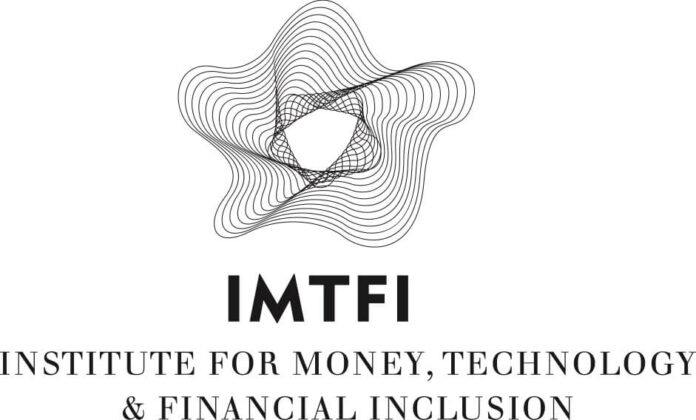2019, Cash Matters, the pro-cash movement by the ICA, published the white paper “Virtually Irreplaceable – Cash as a Public Infrastructure” by Dr. Ursula Dalinghaus, making a case for how and why cash must be understood as a “public good.”
Dalinghaus, Visiting Professor of Anthropology at Ripon College, is also an affiliated scholar at the Institute for Money, Technology & Financial Inclusion, IMTFI, University of California at Irvine, which has made itself a name as one of the leading institutes when it comes to the role of money in people’s daily lives and practices and to the best way to go about financial inclusion.
The Director of the IMTFI is Professor Bill Maurer, Fellow of the American Association for the Advancement of Science, Fellow of the Filene Research Institute, Dean of the School of Social Sciences and Professor of Anthropology at the University of California, Irvine. Bill Maurer will also be one of the keynote speakers at the ICA’s Global Currency Forum 2020 in Barcelona.

CN: Dr. Dalinghaus, you just published the study “Virtually Irreplaceable – Cash as a Public Infrastructure” for Cash Matters. You are a Visiting Professor of Anthropology at Ripon College but kept up your work as an affiliated scholar with IMTFI. What makes working with IMTFI so special?
Dalinghaus: One of many aspects that make working with IMTFI so special is being part of a community of research practice that has always prioritized grounded research in the local communities of our researchers. Over the past decade IMTFI has built up a tremendously rich and incredibly diverse archive of evidence on the multifaceted ways that communities in the global South have integrated new digital and mobile money technologies with traditional monetary practices. This careful research collected over time has been tremendously important for developing a more systematic understanding of the use cases people see for cash. It is publically accessible in a variety of formats, from blog posts to working papers, and now a new edited volume, Money at the Margins: Global Perspectives on Technology, Financial Inclusion, and Design (Berghahn/ Maurer, Musaraj, and Small, editors).
IMTFI is also unique in starting with empirical and theoretical insights from the global South to generate new questions for our research on money in more developed markets in the global North (rather than only the other way around, as is so often the case). For example, insights from the global South have sharpened our understanding of the role that cash denominations play across the globe as a budgeting tool, a means of differentiating the meaning and intent of a money gift, or the importance of national currency denominations as a communicative medium for efforts to promote universal access, equity and inclusion (such as recent redesign proposals of particular banknotes in Canada, Australia, the UK, and the US). To underscore IMTFI’s signature approach, the concepts of monetary ecology and monetary repertoires are extraordinarily productive tools for research and teaching on the user experiences of payments broadly. By drawing attention to the complementarity of payment tools from a user perspective, we can see how cash is a crucial part of practical as well as social transactional worlds and of strategies for risk diversification.
Cash as Democratizing Force
CN: What is the key takeaway of your white paper on cash as a public good?
Dalinghaus: The key takeaway is that physical cash will continue to have a vital and complementary role to play alongside digital well into the future, not only as a method of payment but also as a democratizing force – an important form of power-sharing between issuer and user that is distinct from digital-based money. Cash increasingly gets discussed as a passing form that will eventually be replaced by digital, if not soon, then sometime in the distant future. In contrast, this paper shows that physical cash is irreplaceable. One reason is that people value the ability to choose from multiple payment forms. Another, even more substantial argument for cash is that the cash infrastructure serves a vital public role since cash can circulate independently of its issuer and it can work offline. Evaluating the historical and cross-cultural evidence on how people use physical currency, it is clear that there is something crucial about the materiality of cash as a distributed form, which allows it to be part of such diverse practices, financial, political, and social. Precisely this flexibility is what makes cash indispensable as a public medium that everyone in society can use and access. However, as this paper also shows, cash as a public good depends upon legal mandate, good governance, guaranteed access, and technological support in maintaining the cash infrastructure as a vital part of wider payment systems.
Payment Methods’ Cambrian Explosion
CN: What developments in the payments landscape do you see when you draw on IMTFI’s field expertise and research on a global level?
Maurer: Payments have been going through what we’ve been calling a Cambrian Explosion for almost a decade now. The Cambrian period in geologic time was characterized by an amazing proliferation of different forms of life on planet earth, occupying different niches and with an incredible variety of body forms. We’ve been in the middle of something similar with payments. Think about all the new ways to pay that startups and established payment companies have created just in the past few years, from tap and pay cards to biometric-ID secured mobile payments, to Venmo or WeChat Pay. They all use different technologies; they use different interfaces; they often sit on top of different, existing payment rails, or they are trying to build entirely new ones, like some of the developments in the cryptocurrency space. The big question for us is: what sticks, and what doesn’t? Who uses which of these technologies, and for what purposes? How do all of these new things fit into people’s existing behaviors around money and payment?
Cash as Public Good
CN: What is your recommendation to banks, politicians and governments when it comes to payments in general and cash in particular?
Maurer: Above all, they need to realize that there is no one size fits all payment solution. People will always use different technologies for different purposes – Venmo with friends and for the rent, debit cards for groceries, credit cards for more expensive purchases like appliances, PayPal online, etc. etc. First, there is a virtue in recognizing how people use payment diversity to achieve their different goals. Second, they have to remember that, unless you use cash, you have to pay to pay, and that sometimes this fact erects high barriers for the poor and underbanked. In many circumstances cash remains the best option. It’s the cheapest for the user, it’s portable, it’s private… Not everyone on the planet is a well-off professional working in a clean office with job security. We need to design payment for all people, in all kinds of circumstances – some of which will unfortunately become more and more common in the years to come, such as refugees fleeing political violence or environmental devastation caused by climate change. Policy makers and governments should always ask themselves: what if things go wrong? From a data breach, to massive disruptions in politics and society, to infrastructural or electrical grid failures: how will people pay? How does ensuring a diversity of payment – kind of like biodiversity in ecological systems – ensure human resilience?
We need a more nuanced discussion about payment choices!
Dalinghaus: In addition to the policy considerations outlined in the paper, I would argue for a more nuanced discussion of payment choice. When it comes to measuring and collecting data on cash usage and cash in circulation, researchers and policy makers should dig deeper into the data and ask different kinds of questions to better understand and capture payment diversity. Comparing the number and percentage of transactions of different payment methods is important but does not necessarily add up to a definitive statement on a hierarchy of consumer payment preferences, certainly not one that supports an argument for a cashless future. As Bill has already pointed out, people use different technologies for different purposes, and those purposes may only become apparent through tracking a wider circuit of transactions and practices over time. This dimension of payment method usage is rarely captured in current cash payment studies and is difficult to learn through survey methods alone. Incorporating qualitative data collection tools can help here. Understanding payment diversity at the micro-level is also relevant for policy making at the level of monetary and fiscal policy. For example, there is growing evidence from a variety of corners that people turn to cash as a means of curtailing growing indebtedness, some of which is the result of fees and costs associated with digital payments. This is not only important for the poor and underbanked but also, for example, for college and university students burdened with mounting student-loan debt repayments as a recent article shows.
Ensuring diversity of payment, and the resilience of the cash infrastructure in particular, will be crucial in addressing growing policy concerns about unsustainable debt relations and inequality, which also prevent people from participating in the wider economy. A related point is that when people hold or use physical cash, there remains a concrete bridge and access point to monetary authorities and state institutions that is important for public accountability. In my research I have observed how physical cash and tangible money objects facilitate communication between central banks and the public on complex policy issues and financial education. Sharing cash hand to hand is a form of knowledge sharing accessible to all, just like a physical book can be shared, borrowed, and passed hand-to-hand to others whereas digital books are often encoded to prevent sharing across users and devices. So while both physical and digital forms promote knowledge sharing, they do so in different ways and with different implications for ownership and access. Cash is particularly important for people’s agency and self-determination because it can be used, shared, and exchanged independently of citizenship status and across jurisdictional boundaries. Institutional actors should therefore be mindful of how cash is already an effective part of their public mandates while working to ensure greater inclusion, transparency and resilience of financial systems that work better for everyone in society.
If you want to read part 1 of this interview, click here.
If this topic interests you we recommend a visit to the websites of Cash Matters and the IMFTI.
If you would like to take a look at the study, you can also download the whitepaper.
This short video will give you an entertaining overview of the IMFTI’s work.
We already reported on the release of the study. You will also find additional links beneath the article.





